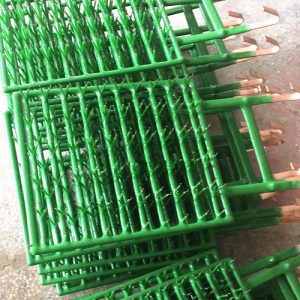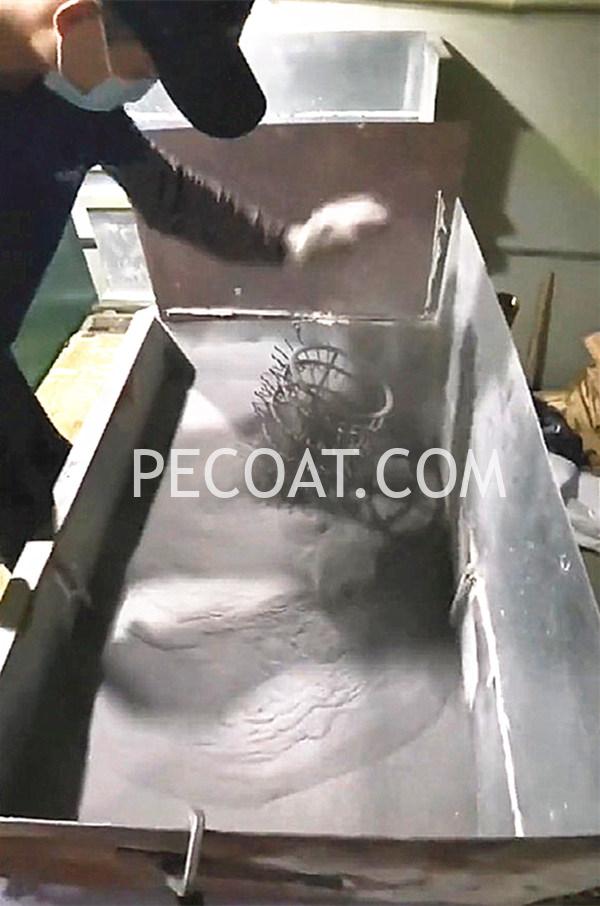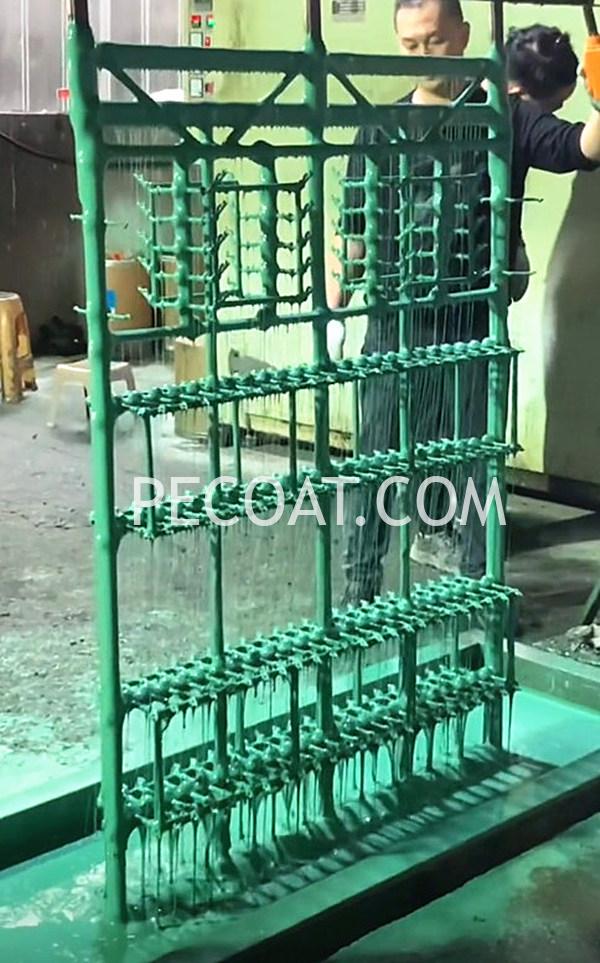Polyethylene Coating PVC Plastisol Coating for Plating Racks Jigs

Requirements for Coating for Plating Racks Jigs
The coating requirements for plating racks and jigs can vary depending on the specific application and the materials being plated. However, some common requirements for the coating include:
- Corrosion resistance: The coating should provide a protective barrier against corrosion, preventing the underlying metal from being exposed to corrosive substances.
- Adhesion: The coating should have good adhesion to the surface of the racks and jigs, ensuring that it remains intact during the plating process and subsequent handling.
- Chemical resistance: The coating should be resistant to the chemicals used in the plating process, such as acids, alkalis, and plating solutions, to prevent degradation or damage.
- Wear resistance: The coating should have good wear resistance to withstand the mechanical stresses and abrasion that can occur during the plating process and subsequent use.
- Temperature resistance: The coating should be able to withstand the temperature variations encountered during the plating process, including heating and cooling cycles.
Polyethylene Coating and PVC Plastisol Coating
Polyethylene powder coating and PVC plastisol coating are two commonly used coatings for plating racks and jigs.
Polyethylene powder coating is a dry powder that is applied by dipping process to the surface of the plating racks and jigs. The powder is typically made of polyethylene resin, which is melted and fused onto the surface. The coated racks and jigs are then heated to cure the powder, creating a durable and protective finish.
One of the key advantages of polyethylene powder coating is its excellent chemical resistance. It can withstand exposure to a wide range of chemicals, including acids, alkalis, and solvents. This makes it ideal for plating racks and jigs used in industries such as automotive, aerospace, and electronics, where exposure to corrosive substances is common.

PVC plastisol coating, on the other hand, is a liquid coating that is applied by dipping the plating racks and jigs into PVC plastisol. Plastisol is a suspension of PVC particles in a liquid plasticizer. When heated, the plastisol cures and forms a flexible and durable coating.
One of the main advantages of PVC plastisol coating is its excellent corrosion resistance. It can protect the plating racks and jigs from the corrosive effects of chemicals and moisture, ensuring their longevity and performance. This makes it suitable for applications where the racks and jigs are exposed to harsh environments, such as in the plating industry.
Another advantage of PVC plastisol coating is its flexibility. The cured coating remains flexible even at low temperatures, allowing the racks and jigs to withstand impact and deformation without cracking or peeling. This makes it ideal for applications where the racks and jigs are subjected to bending or flexing, such as during handling or transportation.
In terms of application, PVC plastisol coating can be applied by dipping the racks and jigs into a vat of plastisol or by spraying the plastisol onto the surface. The coated racks and jigs are then heated to cure the plastisol, forming a smooth and seamless coating.

While both polyethylene powder coating and PVC plastisol coating offer excellent protection for plating racks and jigs, they do have some limitations. Polyethylene powder coating, for example, may not be suitable for applications where a high level of flexibility is required, as it can become brittle at low temperatures. PVC plastisol coating, on the other hand, may not be as resistant to high temperatures as polyethylene powder coating.
In conclusion, polyethylene powder coating and PVC plastisol coating are two effective options for protecting plating racks and jigs. Polyethylene powder coating offers excellent chemical resistance and abrasion resistance, while PVC plastisol coating provides superior corrosion resistance and flexibility. The choice between the two coatings depends on the specific requirements of the application, such as the desired level of chemical resistance, flexibility, and temperature resistance.

hi, can you match color for my thermoplastic coating?
which type is better for jigs?